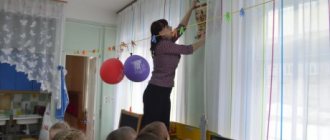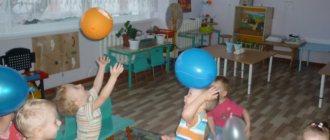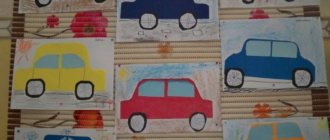How does a baby learn to play?
Substitute items
How to find out whether a child has his first director's play or not? Take a closer look: if a child, instead of a phone, picks up a brick and, putting it to his ear, says something, or moves the brick around the table, making the sounds of a running motor, or does something else similar, this is great.
You are watching the first game actions of the director's game. They differ from simple manipulations with toys in that the baby transfers functions from one object to another. As teachers say, he begins to use substitute objects. Rejoice, you are being shown the first manifestations of imagination - the highest of the highest mental functions.
Director's play appears in three-year-old children and is characterized by the primitiveness of the plot and short duration. But don’t let this bother you, hard trouble is the beginning.
Fairy tale
Fairy tales acquire special significance in teaching a child how to play. They are especially important for the first director's games. A director's game always has a plot (that's why it's a game). It is difficult for a small child to come up with it on his own. A fairy tale or cartoon helps him.
The child does not listen to fairy tales. This also happens. Therefore, tell them using puppet theater. You can see what they are in the video here. When a word at three years old (and older) is based on some image (picture, object), it is perceived as if at a higher level, because both hemispheres of the brain are involved in the work.
A fairy-tale plot-scenario helps the child learn to come up with mise-en-scène - to imagine a sequence of actions in space, in other words. At first, the director's play will be based on the fairy tale verbatim. But over time, the baby will learn to overcome this given plot. Let me give you an example of an already quite developed director’s acting.
Director's play "Birthday"
5) age adequacy of preschool education (compliance of conditions, requirements, methods with age and developmental characteristics).
Principles of education:
formation of a personal style of relationships with peers and teachers; creating a positive emotional background and an atmosphere of emotional uplift; education through interaction.
Principles of training:
principle of accessibility; principle of visibility; the principle of systematicity and consistency; scientific principle; principle of consciousness; principle of activity.
Education methods:
game, artistic expression, emotional stimulation with entertaining content.
Teaching methods:
verbal (conversation, encouragement); visual (demonstration, display); practical (space design, joint preparation of attributes).
Game equipment:
colored box, various objects for playing out situations
Preliminary work: Conversation “Who is a director”
— The theater is a magical land!
How many miracles she gives us,
Holiday, smiles, songs and laughter
This country awaits us all!!!
— Who knows what theater is? (Listen to the children's answers.)
-That’s right, the theater is an amazing house where they show performances, fairy tales, where they dance and sing, and recite poems;
- Why do you think people go to the theater? (children’s answers). Adults and children go to the theater to watch a play, a fairy tale, listen to music, learn new things, and relax. That's right, children, every visit to the theater is a holiday.
-Do you know who is organizing this holiday for us? (actors, painters, make-up artists, costume designers, etc.)
— There is another very important profession:
Mystery
He's a theater worker
– Productions “conductor”,
Performance manager
- This is probably true... (DIRECTOR!)
- Guys, what does the director do? (children’s answers). Offers the roles of fairy-tale characters, shows the artists how to behave in order to be like their hero, what voice the director advises to speak in, and conducts rehearsals.
-He runs the show
He knows all the scenes by heart.
He teaches how to play a role.
What should we call him, friends? (Director.)
The director is the most important person on the stage or film set. The director chooses which play to stage, distributes the roles, organizes and conducts rehearsals, and everything that the actors perform on stage happens according to the director’s plans.
“He is an organizer, creative director and inspiration for the entire acting group. If it were not for the art and high professionalism of directors, the world would not have seen talented feature films or theatrical productions.
-I suggest you play a game. I will be the director, and you will be the aspiring actors. I propose to depict any fairy-tale animal, and I will try to guess. children take turns depicting any character with movements and facial expressions
"The hedgehog came to us." Directing in the 2nd junior group
Director's play in
the 2nd junior group
"A hedgehog came to us."
Target:
involve children in the game with a game character - a hedgehog; help develop the plot, focus children’s attention and interest on the idea, including them in dialogue with the game character (hedgehog), encourage them to use game materials and toys in the game, name their actions, and conduct a dialogue; guide children’s unformed actions and promote a correct understanding of the environment.
Progress of the game.
The teacher brings in a soft toy - a hedgehog.
- Guys, look who came to us. Listen, he wants to tell you something. (the teacher imitates the hedgehog’s voice and speaks for him:
— I want to know how you live and play in kindergarten.
Educator:
Let's, children, show the hedgehog how we play.
Hedgehog:
But I still have hedgehogs in the forest and I’m afraid to leave them alone.
Educator:
Our guys will not leave your hedgehogs in trouble, they will play with them.
(children who want to play with the hedgehogs go to the corner where soft toys sit on the rug - hedgehogs, large building materials, models of fruits and vegetables. The children build them a house, furniture, treat them, develop the plot of the game).
Hedgehog:
Can I watch your group?
Educator:
Come in, hedgehog, we will show and tell you everything. (the hedgehog draws the children’s attention to the play corner, where a doll lies in a crib, covered with a blanket).
- Who is that in the crib? Why?
Educator:
Guys, tell me, what happened to her?
(children's answers: this is a doll, she is tired, resting).
Educator:
Or maybe the grandmother is sick and is waiting for her granddaughter to come see her, tidy up, and go get some medicine. Who will show the hedgehog how you will play? (those who wish to develop the plot of the game, come up with more actions, play them out).
The hedgehog approaches the medical corner: “What is the bear (toy) doing here?”
Educator:
“Now the guys will tell you” (children’s answers: he got sick, came to the hospital, his ear hurts, etc.)
- Who wants to treat him? (children who wish to do so put on white coats and hats, develop play with animals, and in the game convey chains of actions familiar to them).
Educator:
And also a hedgehog, the guys love to play with small toys, models, build garages, roads, bridges for them, play with small building materials).
Hedgehog:
Oh, how I want to see what the guys will build. (children sit at the table and create a design with small toys and small building material).
Educator:
“Look, hedgehog, the guys in the group have an even bigger car.”
Hedgehog:
“Why is there a cat sitting in it?” (toy)
Educator:
She probably wants the children to take her for a ride and play with her. Show me, guys. (those who wish take on the role of a driver, passengers, perform game actions, select the necessary attributes).
Educator:
“Now, hedgehog, sit down and watch the guys play. And you guys speak louder during the game so that the hedgehog can hear you playing, talking with each other, with toys. (The hedgehog watches the children’s actions, their play, enters into dialogue with them, contributes to the development of the plot, suggests new actions, directs unformed actions).
After the game, the hedgehog invites all the children to his forest, to his hedgehogs. Children meet them there and show them what they built for the hedgehogs, how they played with them, and what they fed them.
The hedgehog thanks all the children for playing and says that he really enjoyed it and learned a lot from the guys. Now he will also play with his little hedgehogs.
Director's play
But let's return to the topic: how to teach a child to play
How is the game developing in general, what transformations is it undergoing? Many mothers say that there was a period in their baby’s life when mother’s favorite toys were pots, lids, and frying pans. Many of them get irritated: they are spinning under their feet. At first, the child simply manipulates the pots and pans. Then the first plot-based games appear - the child repeats the individual actions of the mother.
These display play activities are incredibly important because they create the basis for further development. And then the chain of games develops:
- director's
- role-playing,
- game with rules
- and again the director's.




